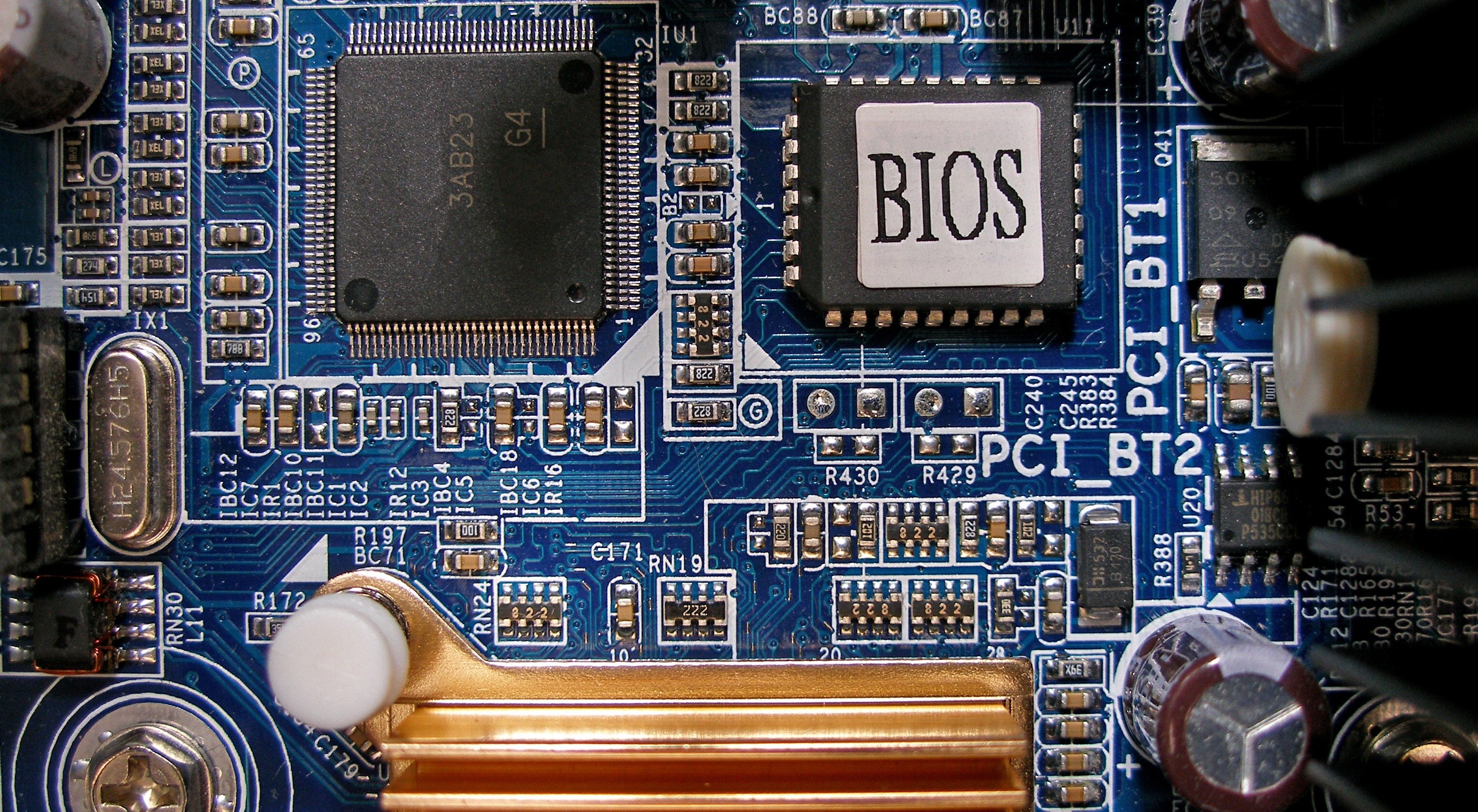The four functions of BIOS Power-on self-test (POST). This tests the hardware of the computer before loading the OS. Bootstrap loader. This locates the OS. Software/drivers. This finds the software and drivers that interface with the OS once running—complementary metal-oxide-semiconductor (CMOS) setup.
What is the function of the BIOS?
BIOS, in full Basic Input/Output System, is a computer program typically stored in EPROM and used by the CPU to perform startup procedures when the computer is turned on. Its two major methods are determining what peripheral devices (keyboard, mouse, disk drives, printers, video cards, etc.).
What is the most important function of the BIOS?
The BIOS software has several different roles, but its most important part is to load the operating system. BIOS uses Flash memory, a type of ROM. When you turn on your computer and the microprocessor tries to execute its first instruction, it must get that instruction somewhere.
What are the four functions of a CMOS?
The CMOS is a physical part of the motherboard: a memory chip that houses setting configurations and is powered by the onboard battery. The CMOS is reset and loses all custom settings if the battery runs out of energy. Additionally, the system clock resets when the CMOS loses power.
What are the key functions of BIOS quizlet?
What are the functions of the BIOS? A computer’s Basic Input Output System and Complementary Metal-Oxide Semiconductor handle a rudimentary and essential process: they set up the computer and boot the operating system.
Why do we need BIOS?
The first thing BIOS does is initialize and test the system hardware components. Its goal is to ensure the details are attached, functional, and accessible to the Operating System (OS). If any hardware component isn’t accessible, BIOS pauses the booting process and issues a warning.
What does BIOS look like?
The BIOS is the first piece of software your PC runs when your turn it on, and you usually see it as a brief flash of white text on a black screen. It initializes the hardware and provides an abstraction layer to the operating system, freeing them from having to understand the exact details of how to deal with devices.
How does BIOS work?
BIOS uses Flash memory, a type of ROM. Check the CMOS Setup for custom settings. Load the interrupt handlers and device drivers: Initialize registers and power management. Perform the power-on self-test (POST) Display system settings. Determine which devices are bootable. Initiate the bootstrap sequence.
How do I enter BIOS?
To access BIOS on a Windows PC, you must press the BIOS key set by your manufacturer, which could be F10, F2, F12, F1, or DEL. If your PC uses its power on self-test startup too quickly, you can also enter BIOS through Windows 10’s advanced start menu recovery settings.
How many types of BIOS are there?
There are two different types of BIOS: UEFI (Unified Extensible Firmware Interface) BIOS – Any modern PC has a UEFI BIOS. UEFI can handle drives that are 2.2TB or larger, thanks to it ditching the Master Boot Record (MBR) method in favor of the more modern GUID Partition Table (GPT) technique.
What is the relationship between CMOS battery and BIOS?
The BIOS is the program that starts a computer up, and the CMOS is where the BIOS stores the date, time, and system configuration details it needs to start the computer. The BIOS is a small program that controls the computer from when it powers on until the operating system takes over.

What is the main function of a CMOS battery?
The CMOS battery powers your laptop’s BIOS firmware, which boots up your computer and configures data flow. You can tell if your CMOS battery has died if your computer has difficulty booting up, if drivers disappear, and if your laptop’s date and time are incorrect.
Is CMOS battery important?
The CMOS battery is an important motherboard feature that will trigger a beep code when it goes dead. It is best to replace it because it doesn’t just hold time or date but BIOS settings. Modern boards have similar backgrounds in non-volatile memory, so they are not easily erased.
What is the function of BIOS and UEFI )?
UEFI is an improvement or evolution of the BIOS. Its functions are the same, adding greater security, speed, and compatibility with modern devices. In addition, UEFI can support hard drives exceeding 2.2 Tb, which is a limitation for the BIOS since it cannot boot them.
What are the key functions of the BIOS Dell?
It acts as an interface between the computer hardware and the operating system, allowing the software to control the hardware. The BIOS contains instructions that the computer uses to perform basic instructions, such as booting from a network or hard drive or which drive to boot from.
What is the difference between a traditional BIOS and UEFI?
UEFI stands for Unified Extensible Firmware Interface. It does the same job as a BIOS, but with one basic difference: it stores all data about initialization and startup in an. UEFI provides a faster boot time. UEFI supports drive sizes upto nine zettabytes, whereas BIOS only supports 2.2 terabytes.
Can a BIOS be hacked?
A vulnerability has been detected in the BIOS chips found in millions of computers, which could leave users open to hacking. BIOS chips are used to boot a computer and load the operating system, but the malware would remain even if the operating system were removed and re-installed.
Who created BIOS?
American computer scientist Gary Kildall came up with the term BIOS in 1975. It appeared in the so-called CP/ Program/Monitor) operating system.